The latest hotness in the USN is Distributed Maritime Operations (DMO), which is their strategy for dealing with the rise of Chinese maritime power. I'd love to give you the official definition here, but I can't, because despite talking about this for 6 years now, they have yet to give an official unclassified definition for it.1
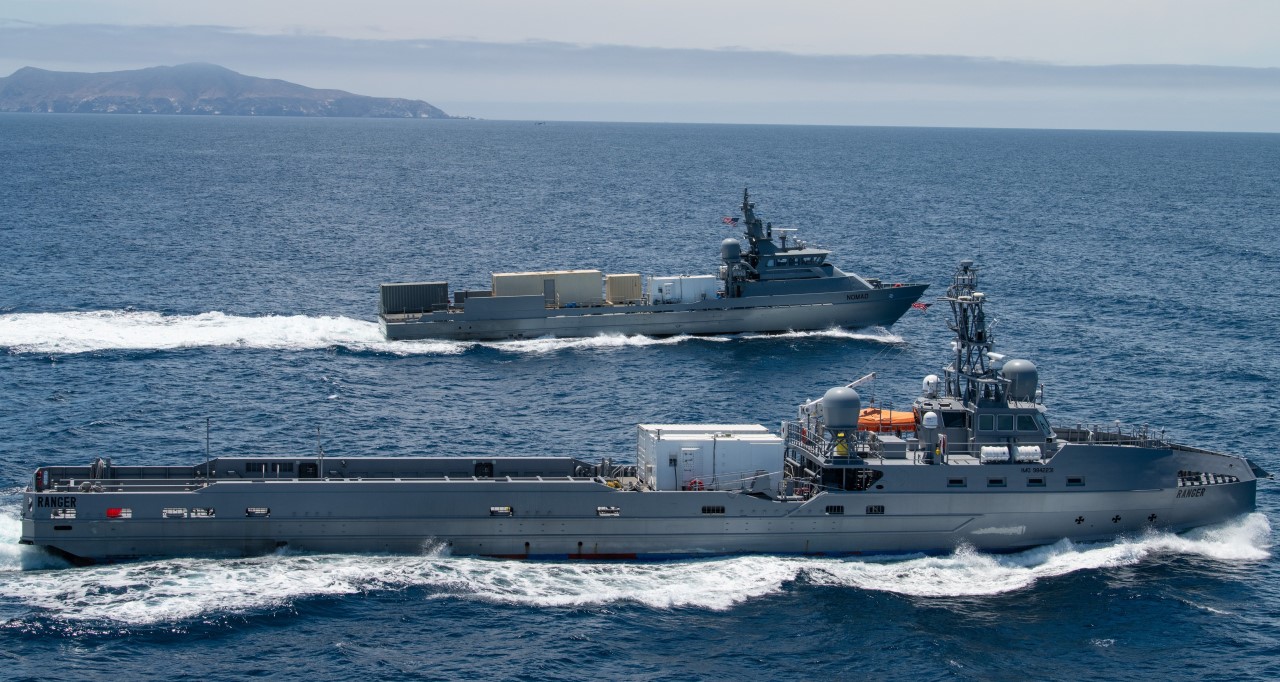
Two USV prototypes
The best definition I've been able to find from DoD sources, and it took a bit of looking,2 is "An operations concept that leverages the principles of distribution, integration, and maneuver to mass overwhelming combat power and effects at the time and place of our choosing. This integration of distributed platforms, weapons, systems, and sensors via low probability of intercept and detection networks, improves our battlespace awareness while complicating the enemy’s own scouting efforts. Applying combat power through maneuver within and across all domains allows our forces to exploit uncertainty and achieve surprise." Translated out of five-sided thought,3 this is sort of a turbocharged version of network-centric warfare, seamlessly linking together all of the various sensors and weapons wherever they may be so we can face the PLAN with whatever assets are best-placed to destroy them while avoiding providing the enemy with juicy targets.
Now, longtime readers will know that I am a fan of network-centric warfare, so this should be right up my alley, right? Well, no, because once you start to drill down, you hit problems almost immediately. While datalinks and networks are powerful and allow new capabilities that we couldn't get any other way, they are also fragile. This is fine when your individual units are still generally capable of fighting on their own if the nets are down. But one of the major components of DMO is the adoption of unmanned surface vehicles (USVs), which are exactly what they sound like. There are two types: Medium USVs (MUSVs) that are intended to be sensor platforms and Large USVs (LUSVs), which are essentially floating batteries of VLS cells. The MUSV is a pretty reasonable idea, allowing us to put sensors into areas where it may be too dangerous to send a manned ship, or where the manned ship would be too expensive. The most prominent use case discussed so far is trailing diesel submarines, but there are lots of things where having a fairly cheap remote platform could be a valuable contribution. Unfortunately, the same can't be said of the LUSV.4
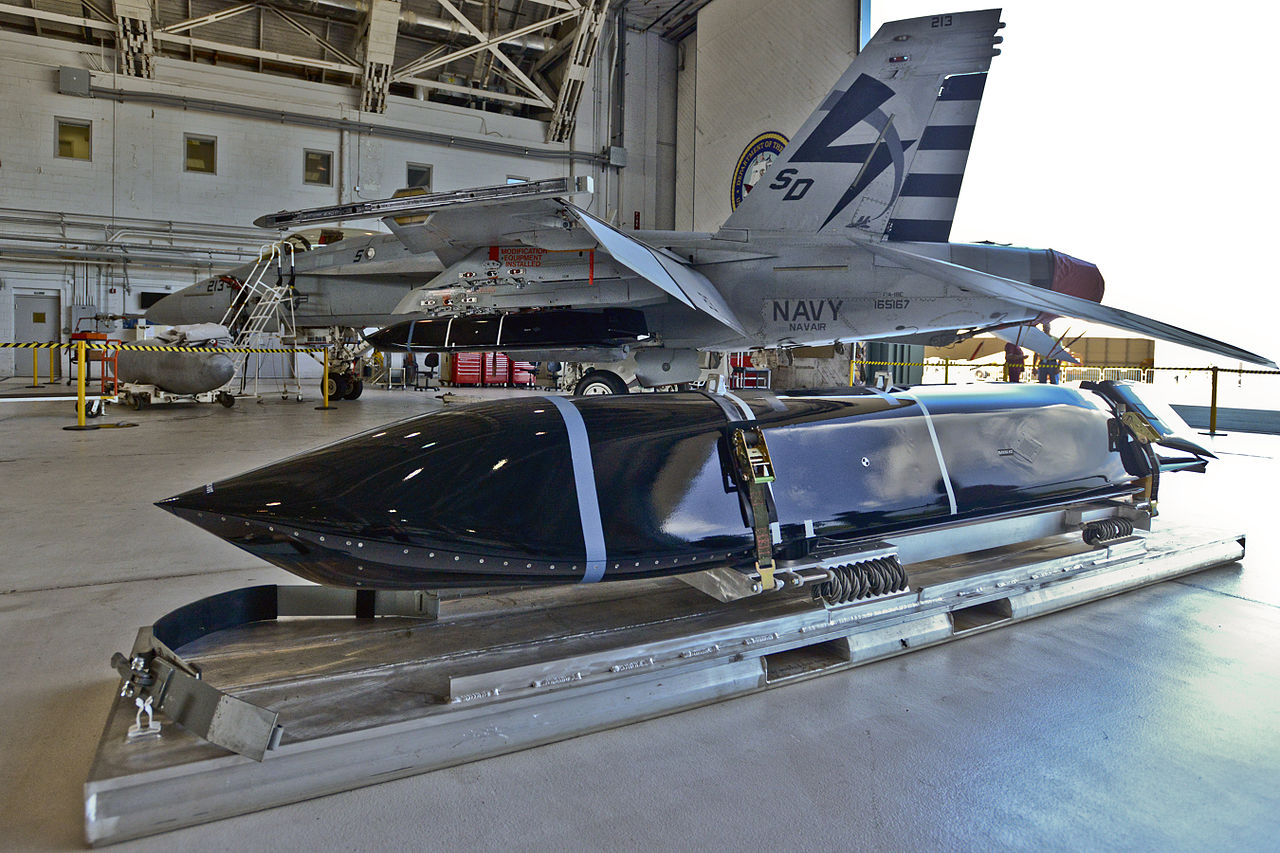
LRASM
Now, the case for the LUSV is simple and obvious: it's a cheaper way of getting more VLS cells, which means more firepower to deal with the PLAN. There are three problems with this. First, will we actually have anything to put in those cells? Increasing the firepower of the fleet is one of the things that Navy leadership is saying it wants to do, but doesn't seem to be taking seriously. When they say "filling 15% of a destroyer's VLS cells with VL-LRASM gives it 20 times the (range*warhead) destructiveness of the old Harpoon battery", I can't say they're factually wrong. But I can point out that that means we'd need well over a thousand VL-LRASM to do that to the entire fleet, and as far as I can tell from looking through budget documents, we've bought something like 200 of the air-launched version and none of the VLS version. More broadly, I would rather we didn't go the way of your typical minor navy and buy just enough missiles to fill all of our tubes once. That paints a rather dismal picture of our survivability, and one that I don't think is justified, particularly after recent events in the Middle East. But even then, we're going to need more missiles that aren't Tomahawk to fight the war the Navy says it's planning for.
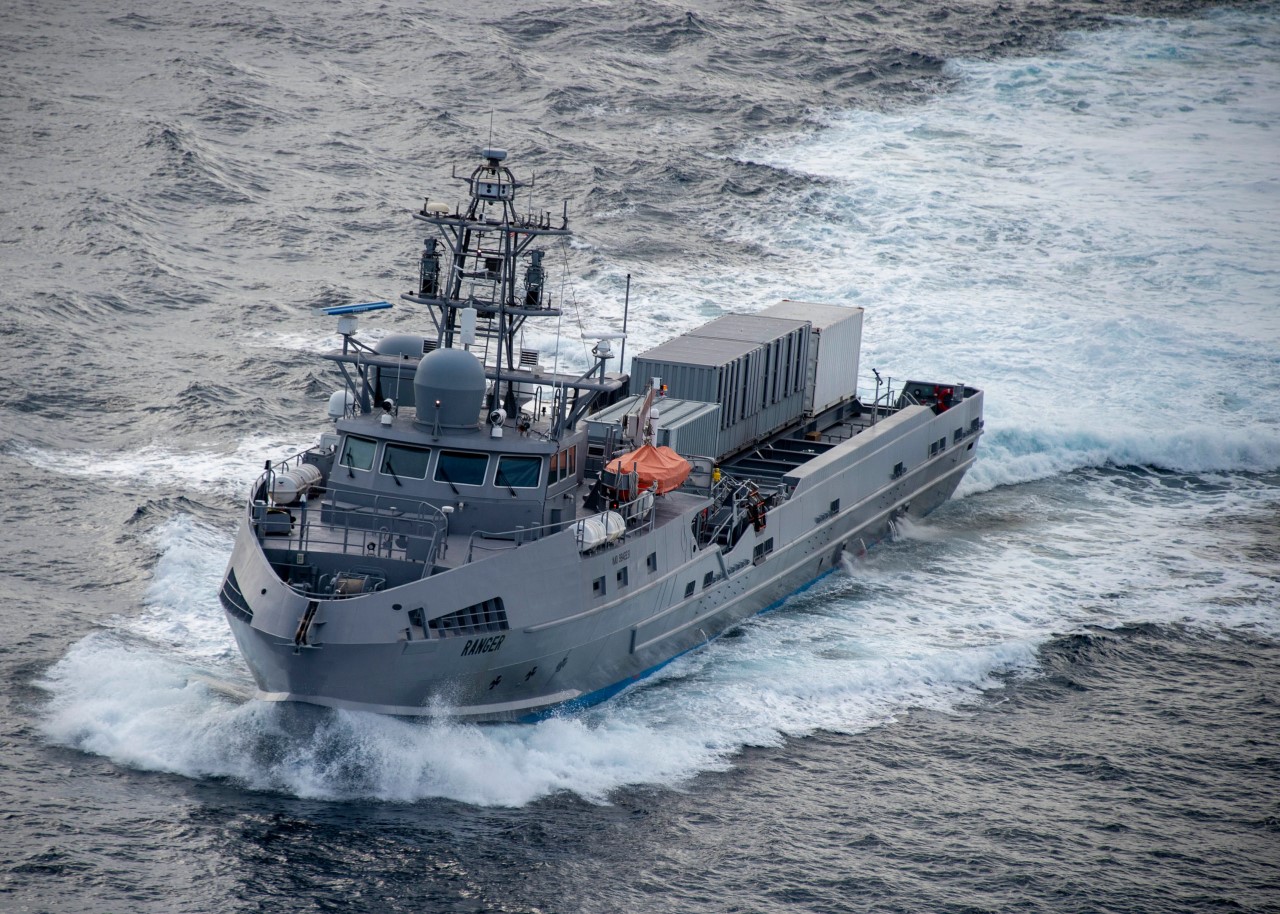
LUSV prototype Ranger5
The second problem is that the LUSV is uniquely dependent on the network to function. All existing warships are at least theoretically capable of operating on their own if the network goes down. Sure, they will be less effective, even dramatically so in some cases, but worst comes to worst, you can fire Tomahawks on coordinates passed over voice radio, defend yourself against incoming missiles using your own radar, and act on the commander's intent even if you can't get in touch with him. The LUSV has none of these advantages. It can't take the initiative to act on its own if the network is down, or even just degraded to the point where stuff doesn't reliably get through.6 The Navy appears to be solving this by pivoting towards "optional manning", where a small crew can be aboard to give orders when needed.7 In practice, I suspect this will become a standard feature of these ships, but even if it does, it won't resolve the bigger issue, which is that the ships are still fundamentally built to fight only as part of the network, and a VLS full of SM-6s isn't much use if the network is down and you have the radar of a corvette or worse. If we actually need more VLS cells, why not look at stretching the existing Burke and Constellation designs to have more cells, instead? It would probably be cheaper and the cells would be more useful.
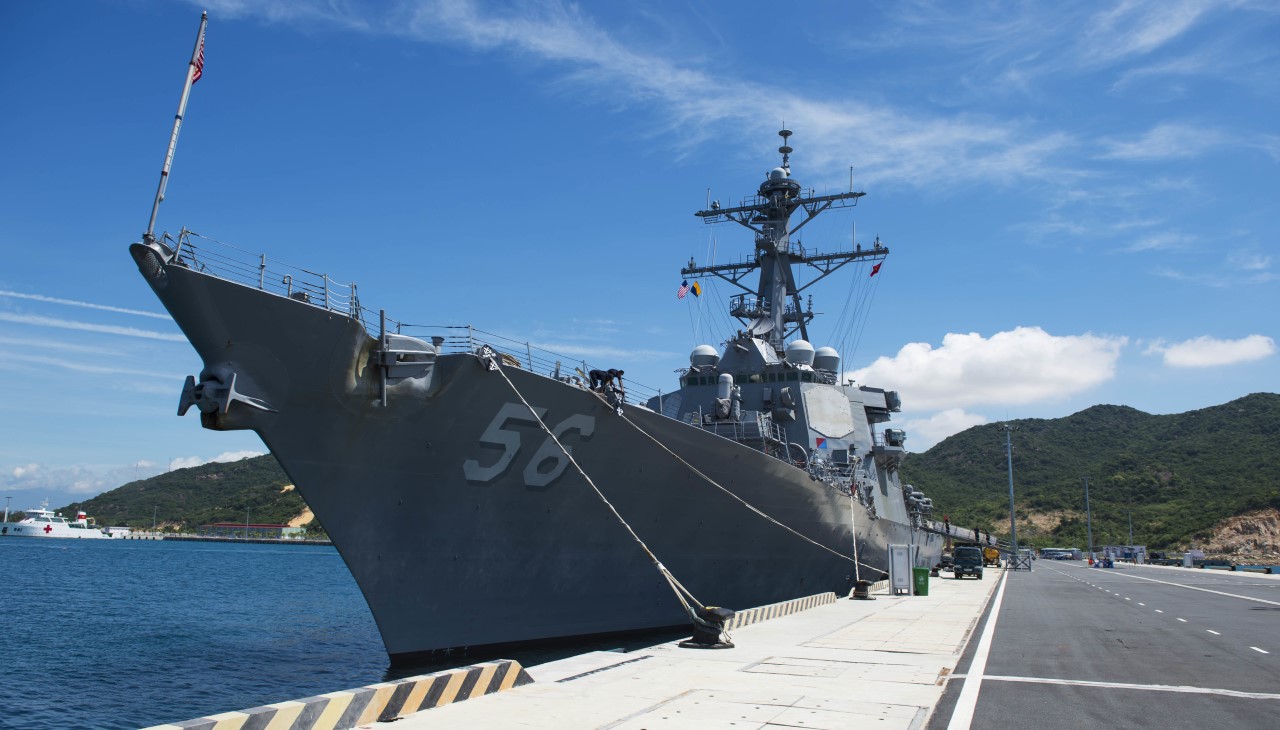
McCain in Vietnam for a port visit
Which brings us to the third problem, that the LUSV is narrowly optimized for a hot-war mission and sacrifices the flexibility inherent in more conventional naval vessels. Could you send one to show the flag and do port visits? Escort freighters off Somalia or in the Red Sea? Transport a boarding party to search for smugglers? Train with a foreign navy to build military and diplomatic ties? The Navy spends a great deal of its time doing this kind of day-to-day mission, and very little of it shooting at the Chinese, particularly in the last 80 years or so, and I find it weird that we're proposing to spend billions of dollars on ships which can't do them at all when the Navy is stretched so thin.
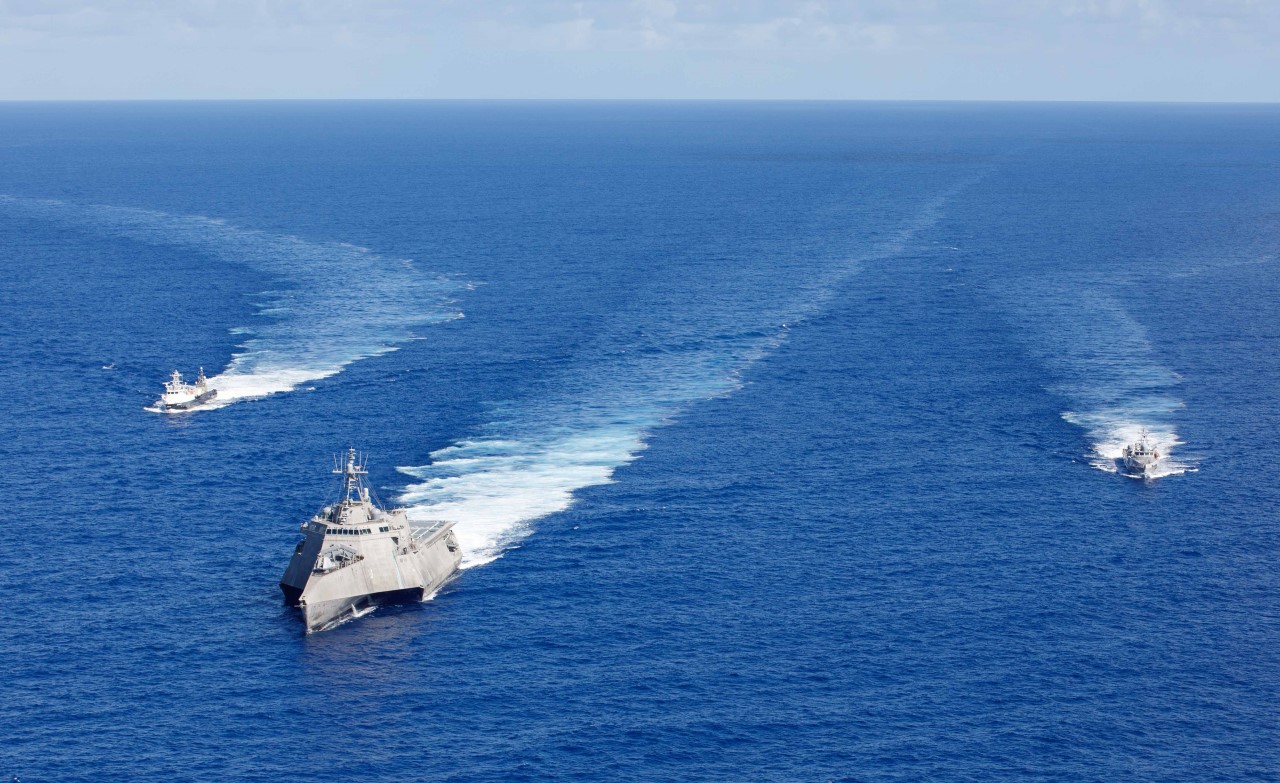
LUSV prototypes operate with my least-favorite manned ship
In a lot of ways, I suppose my criticism of DMO is less about the fundamental concept (you're going to find few critics of more firepower anywhere, and I for one am not going to go after improved datalinks) and more about the implementation details, which don't seem to have been thought through all that well. It's the kind of thing that looks great on the whiteboard in the Pentagon or at a War College, but dodges the down-to-earth questions about how well your datalink is actually going to work when you try to net together platforms scattered across the entire Western Pacific and what happens if it fails. And the fact that it sounds so inviting makes it hard to criticize because the flaws are subtle and require a great deal of specific domain knowledge. If you hand a random group of civilians the definition, they're likely to think it makes at least some sense, provided they can get through the jargon surrounding it.8 This probably ties into the broader ignorance of the limitations of unmanned systems, whose advocates frequently ignore the difficulty of providing reliable, high-bandwidth communications.
I don't really have a good solution to any of this, beyond trying to raise the sanity waterline around defense discussions, something I've already discussed the problems with. Our navy's strategy for dealing with China appears to be a mix of the obvious (more firepower), the buzzwordy, and the bad (LUSVs). And we're leaning way too heavily on the last two for the moment. I only hope that I'm wrong about something (in which case the DoD has good reason for keeping a lot of details classified) or that if we do find out, we've gotten our house in order first.
1 The cynic in me suspects that this is because there isn't a lot of content to the idea, and they're trying to cover that up, which is illegal according to a recent training I took. ⇑
2 I actually came up dry, and it was reader quanticle who found this for me. ⇑
3 So called from a time I once described something as being written "by people who have spent so long in the Pentagon that their thoughts have five sides". ⇑
4 For more details on both USVs, see this CRS report. ⇑
5 I should note that Ranger is a traditional carrier names, and belongs on a better ship than a USV. ⇑
6 To be clear, this is not a theoretical problem. I have some contact with these issues professionally, and despite all modern communications can do, getting wide-area tactical nets to work smoothly is far from a solved problem even in the absence of enemy action. ⇑
7 This also helps solve another weird problem, which is that an unmanned ship is in a weird legal area where it might be possible for other countries to just go and grab it. ⇑
8 This isn't speculation. I polled my church group, who were very kind and played along. 5/6 said DMO made sense as a concept. More on that coming at some point. ⇑

Comments
The snarky observation would be that the LCS is almost the opposite of this. It's a (comparatively) cheap platform that can do most of the low intensity stuff like showing the flag or hunting down dhows off Somalia, and at least for the Independence class benefits from having lots of flight deck and mission space. But they aren't actually very useful for a truly hot war.
The other part of it, which I think would be interesting to delve into more, is that it seems like naval warfare is less suited for distributed systems than either ground warfare or aerial combat.
Like, ground systems are comparatively easier to split up because the chassis are basically free in DoD terms, and for maneuverability/transport considerations generally have to be no larger than a 40' container (approximately) anyways, so they're already modular and somewhat distributed.
Naval systems seem to suffer from the astronomical unit costs of the platform, which makes having a more distributed set of individually less capable platforms a bad trade.
Aircraft seem to be in the middle, where there is a definite trend towards more expensive and more capable platforms, but at the same time there appears to be more openness towards not only unarmed drones, but also things like the Loyal Wingman, as well as some greater distribution in capabilities across platforms.
More or less, although the real opposite is something like the Type 31. The LCS is too fast and has pretensions to hot-war capability that it can't really live up to.
That's an interesting thought. You're pretty much right about the reasons for it on the ground, although I think air is a more complicated picture. There are a lot of air missions where having a human on board isn't that useful, because a computer is perfectly capable of doing "fly around here and take pictures", particularly when you aren't being heavily jammed. Sure, you could also do that with an unmanned boat, but (1) the sea is a more complicated environment (2) airplanes are better at that sort of thing because they are faster and can see further and (3) nobody does maintenance on an airplane in flight, and it's a lot harder to make a remote boat stay out for a month or three than a drone stay out for a day or three. That said, we're in MUSV territory there, and I can see that not being the worst idea.
I'm somewhat less positive on Loyal Wingman than I used to be (the survivability is apparently terrible, to the point where the Air Force is saying "remember that if it gets shot down before it gets its missiles off, this is a problem") but even that is clearly better than LUSV on several levels. First, the comms problem is a lot easier when you are close and have LOS. Second, it's a lot harder to add more missiles to an F-35 than to a ship. Third, I think it's reasonable to assume that the F-35s will continue to operate together, so losing one won't render everything around it blind.
Even ignoring all the other reasons these arsenal ship ideas are bad, you'd be better off just offloading the tomahawks from you're real ships onto these to free up space for more SAM's and avoid most of the problems of unreliable datalinks. Trying to engage incoming missiles with CEC is a lot harder and riskier than just sending over the mission data for a TLAM and telling it to fire.
A modern gunboat! At that point, you might as well put a small crew on the ship, though.
Another interesting problem with the LUSV as pointed out by the Youtube channel Not What You Think is that unmanned ships are also legally vulnerable because hostile navies currently have a lot of legal grey area to just seize them under maritime law. This is mostly worth the risk for the unmanned sensor platforms that Iran already tried stealing, but it would be terrible for one loaded down with SM-6s. I believe this is one of the driving factors for "optional manning" so that someone can't just legally seize it.